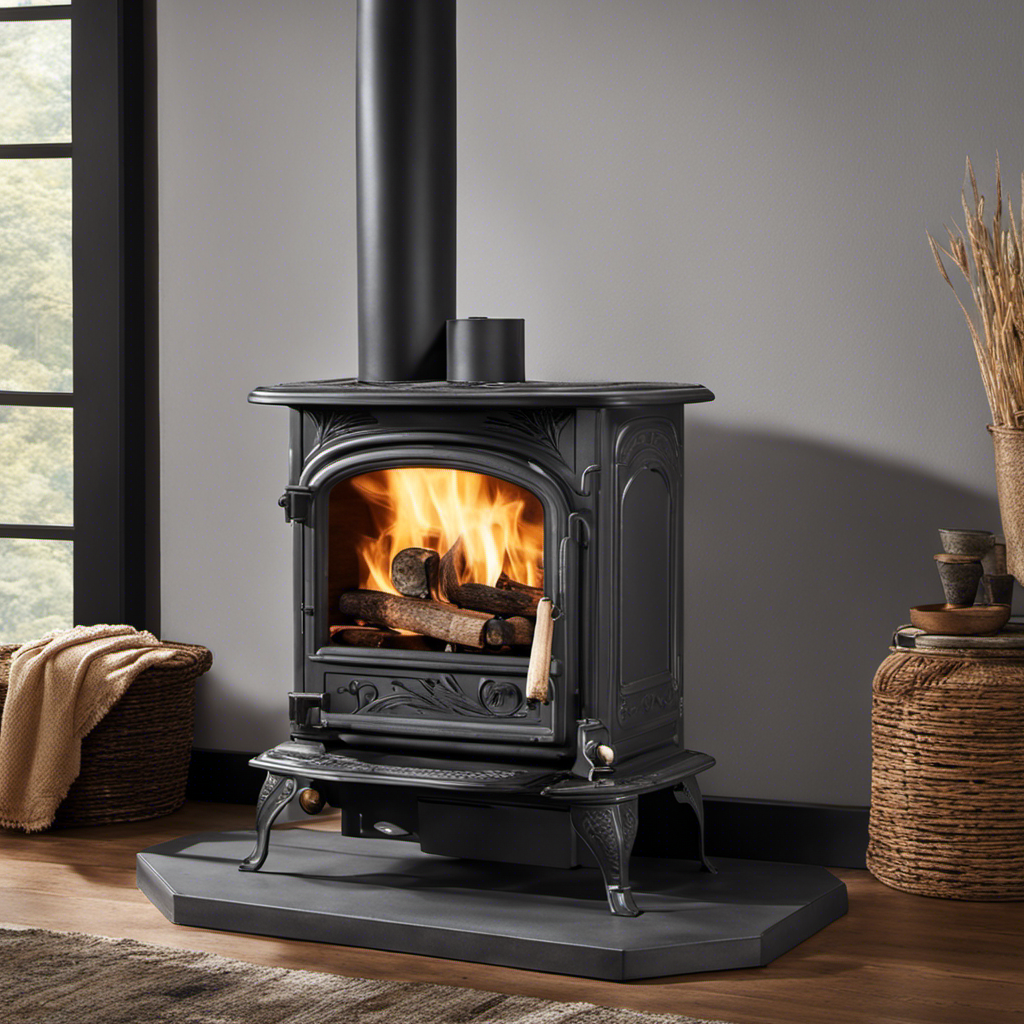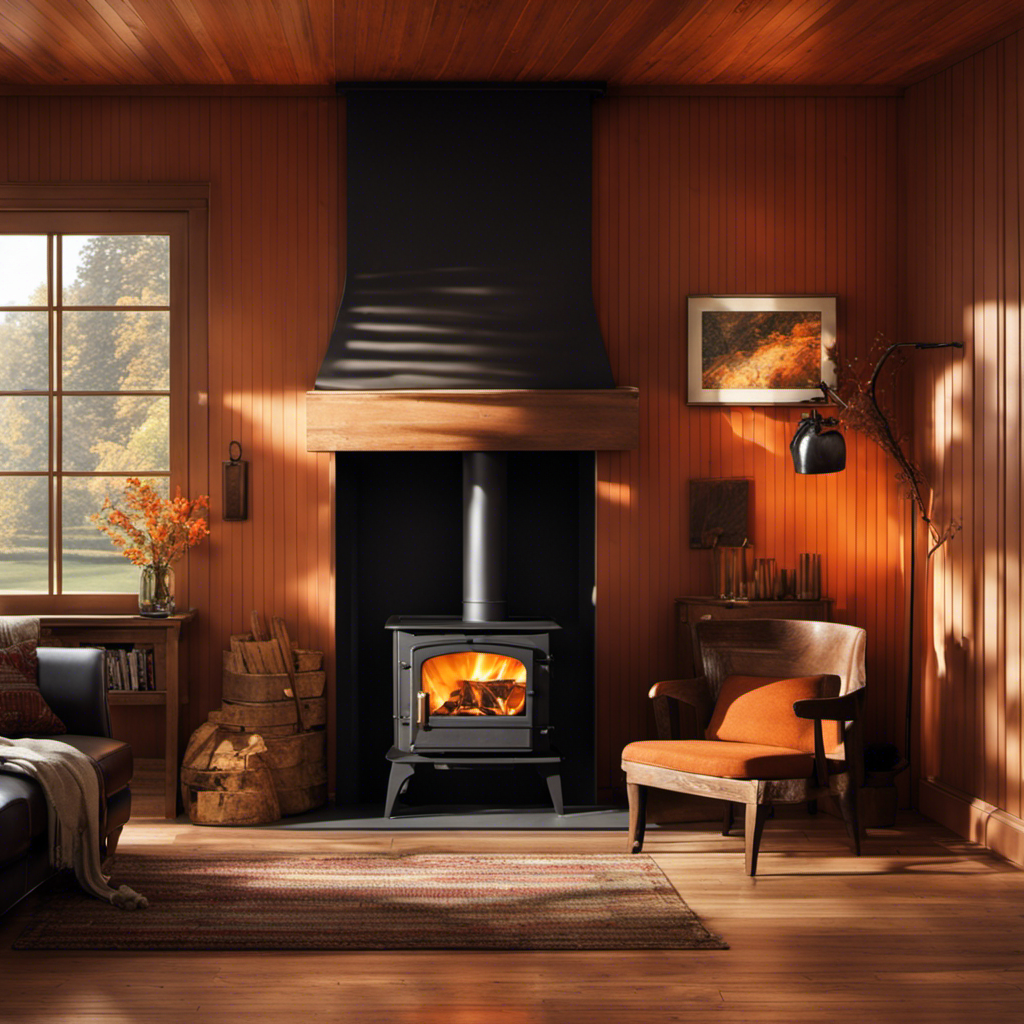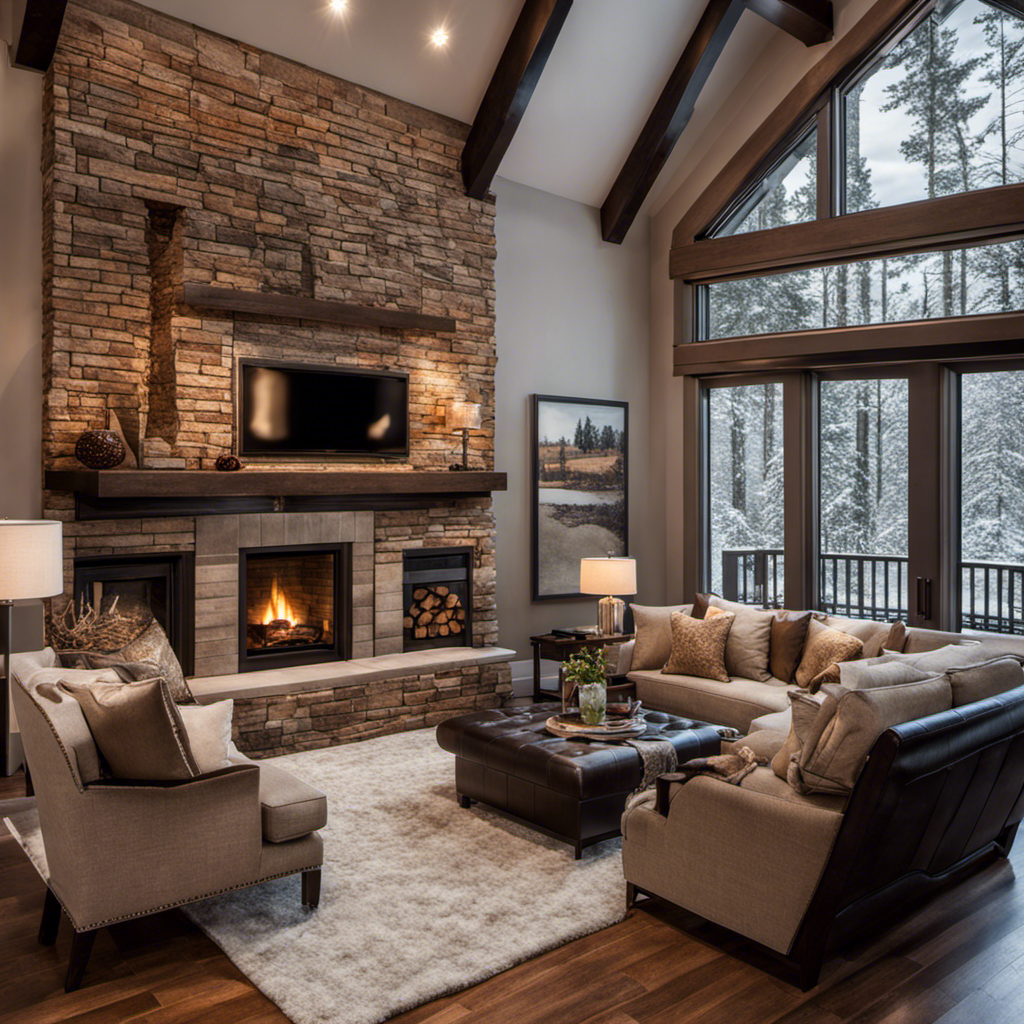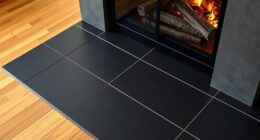So, you’ve spotted that your wood stove pipe is emitting a red glow, huh? Well, it’s important for you to know that this is not a positive indicator. Actually, it could signify that there’s a significant issue with the configuration of your wood stove.
But fear not, my friend, for I am here to shed some light on the matter. In this article, I will delve into the possible causes of this fiery phenomenon, offering up some technical insights and expert advice along the way.
So, let’s get to the bottom of this glowing mystery, shall we?
Key Takeaways
- Insufficient airflow can cause the wood stove pipe to heat up and glow red.
- Burning wet or unseasoned wood reduces burning efficiency and contributes to creosote buildup.
- Oversized or improperly installed stoves can lead to creosote buildup and increased risk of chimney fires.
- Damaged connections and incorrect pipe sizing can result in reduced airflow and overheating, causing the stovepipe to glow red.
Insufficient Airflow
I can’t believe how quickly the wood stove pipe is glowing red due to the insufficient airflow. It’s a common issue that many wood stove users face, especially when the fuel quality and altitude effects come into play.
When the fuel quality is poor, such as using wet or unseasoned wood, it doesn’t burn efficiently, leading to a lower flame and reduced airflow. Altitude effects can also impact the combustion process, as the lower oxygen levels at higher altitudes can hinder the proper burning of the wood. Both of these factors contribute to insufficient airflow, causing the wood stove pipe to heat up and glow red.
This lack of airflow can also lead to excessive creosote buildup, which we’ll discuss further in the next section.
Excessive Creosote Buildup
Excessive creosote buildup can be dangerous and can result in chimney fires, so it’s important to regularly clean and inspect the wood stove and chimney.
Creosote is a byproduct of burning wood and it can accumulate inside the chimney lining over time. This buildup is highly flammable and can ignite, causing a chimney fire. The main cause of chimney fires is the incomplete combustion of wood, which produces more creosote.
Other factors that contribute to creosote buildup include burning unseasoned wood, restricted airflow, and having an oversized or improperly installed stove.
It’s crucial to understand the dangers of creosote buildup and take preventive measures to avoid chimney fires. Regular cleaning, proper maintenance, and using dry and well-seasoned wood are essential to ensure the safe operation of wood stoves and minimize the risk of chimney fires.
Damaged or Faulty Insulation
What could cause damaged or faulty insulation in a wood stove pipe? There are several possible factors that could lead to damaged or faulty insulation in a wood stove pipe. Let’s take a look at some of them in the table below:
| Possible Causes | Description | Prevention |
|---|---|---|
| High Temperatures | Excessive heat can degrade insulation materials, causing them to become damaged or ineffective. | Ensure proper ventilation and use insulation materials rated for high temperatures. |
| Moisture Exposure | Moisture can seep into the insulation and cause it to deteriorate over time. | Install a rain cap and regularly inspect the pipe for any signs of moisture intrusion. |
| Physical Damage | Accidental impacts or improper handling during installation can lead to insulation damage. | Handle the pipe with care and avoid excessive force or pressure. |
Now that we have explored the causes of damaged or faulty insulation, let’s move on to the next topic: overloading the wood stove.
Overloading the Wood Stove
Burning too much wood at once can lead to a dangerous situation in the wood stove. It’s important to understand the limitations of your wood stove and to practice fire safety to prevent any mishaps. Here are some key points to keep in mind:
- Overloading the wood stove can cause the temperature inside the stove to rise rapidly, potentially leading to a fire.
- Excessive heat can cause the stovepipe to glow red, indicating a serious problem.
Regular maintenance of your wood stove, including cleaning the stovepipe, is crucial to ensure proper airflow and prevent overheating.
Always follow the manufacturer’s recommendations for the maximum amount of wood that can be burned at one time.
Improper Pipe Installation
I need to fix the pipe installation to ensure proper airflow and prevent any potential issues. One common problem that can arise from improper pipe installation is damaged connections. When connections between pipes aren’t secure, it can lead to air leakage, which hampers the efficiency of the system. This can result in reduced airflow and poor ventilation, causing the wood stove pipe to glow red.
Another issue that can arise from incorrect pipe sizing is restricted airflow. If the pipe diameter is too small, it can create a bottleneck effect, restricting the flow of air and causing the pipe to heat up.
To address these issues, it’s crucial to carefully inspect the connections for any damages and ensure they’re tightly sealed. Additionally, proper pipe sizing should be implemented to allow for adequate airflow and prevent the pipe from overheating.
Frequently Asked Questions
Can a Wood Stove Pipe Glow Red Due to a Malfunctioning Thermostat?
Yes, a malfunctioning thermostat can cause a wood stove pipe to glow red. When the thermostat fails to regulate the temperature properly, the stove can become too hot, causing the pipe to heat up and glow red. It is important to troubleshoot and fix the thermostat to prevent this issue.
Is It Safe to Use a Wood Stove Pipe That Has a Slight Reddish Glow?
Using a wood stove pipe that glows red is not safe. It indicates overheating, which can lead to a fire hazard. Regular wood stove pipe maintenance is crucial to prevent such issues.
How Often Should I Clean My Wood Stove Pipe to Prevent It From Glowing Red?
I clean my wood stove pipe every 6 months to prevent it from glowing red. Regular maintenance is important for safe operation and to prevent creosote buildup, which can cause the pipe to overheat.
Can Using Wet or Green Wood Cause a Wood Stove Pipe to Glow Red?
Using wet or green wood in a wood stove can cause the stove pipe to glow red. It is important to use dry firewood to prevent this. Additionally, proper ventilation is crucial for preventing overheating and pipe discoloration.
Are There Any Specific Safety Precautions I Should Take if My Wood Stove Pipe Starts to Glow Red?
If my wood stove pipe starts to glow red, I need to be cautious as it indicates excessive heat. Possible causes include restricted airflow, improper installation, or a buildup of creosote. Regular wood stove pipe maintenance is crucial to avoid the dangers associated with a glowing red pipe.
Conclusion
In conclusion, when a wood stove pipe glows red, it’s typically due to factors such as:
- Insufficient airflow
- Excessive creosote buildup
- Damaged insulation
- Overloading the stove
- Improper pipe installation
These issues can lead to a dangerous and inefficient operation of the wood stove. Therefore, it’s crucial to address these concerns promptly to ensure the safety and optimal performance of the wood stove system.
Growing up surrounded by the vast beauty of nature, Sierra was always drawn to the call of the wild. While others sought the comfort of the familiar, she ventured out, embracing the unpredictable and finding stories in the heartbeat of nature.
At the epicenter of every remarkable venture lies a dynamic team—a fusion of diverse talents, visions, and passions. The essence of Best Small Wood Stoves is crafted and refined by such a trio: Sierra, Logan, and Terra. Their collective expertise has transformed the platform into a leading authority on small wood stoves, radiating warmth and knowledge in equal measure.











